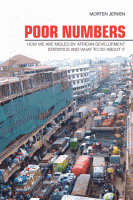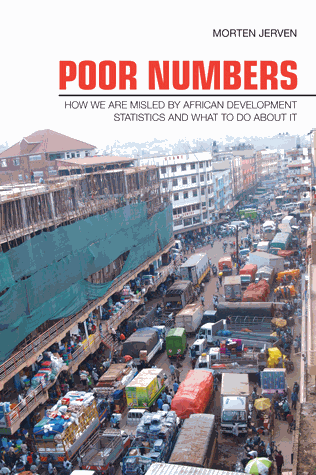 Author: Morten Jerven
Author: Morten Jerven
Publisher: Cornell University Press – 187 pages
Book Review by: Sonu Chandiram
Morten Jerven went to Lusaka in 2007 for fieldwork in connection with his doctoral thesis in economic history. He wanted to find out how national income estimates were arrived at in Zambia and in general, in African countries. He writes of his experience:
“I was struck by the derelict state of the Central Statistical Office in Lusaka. The planned agricultural crop survey was being delayed by the need for car repairs. Most of the offices were dark, and the computers were either missing or very old. The national accounts division had three employees, of whom only one was regularly in the office while I was visiting.
“No one at the office could account for how the income estimates had been made more than a decade ago. In the library there was a dearth of publications and no record of any activity that may or may hot have taken place in the late 1970s, the 1980s and the early 1990s.”
He was surprised to note:
- Lack of basic data
- Rudimentary methods in use
- Entire agricultural sector was accounted for by observing trends in crop forecasts for eight agricultural commodities
- The construction sector was assumed to grow at the same average rate of cement production and imports
- The retail, wholesale and transport sectors were all assumed to grow at the same average rates of agricultural and copper production
- Business services were assumed to grow at the same average rate of trade and transport
- For the rest of Zambia’s economy, there was really no usable data
The author returned to Lusaka in 2010 and found only one man was working on the national accounts. Lack of funding for data gathering and statistical work was not only the case in Zambia but in other Sub-Saharan countries that Jerven has visited since 2007. He was interested to answer the question “How do they come up with these numbers?” The numbers refer to data that is passed on by the national governments to the public and to international agencies.
The answer to the question above is “complicated and multifaceted,” he writes and it differs in each African country from others. He acknowledges that the answers lie beyond anecdotal evidence (what he observed with his own eyes) and the challenges is to provide a systematic explanation.
So he writes that the short answer to the question: “How good are the numbers?” is: the numbers are poor. He points out: “The arbitrariness of the quantification process produces observations with very large errors and levels of uncertainty.”
This book is essentially a study of the processes of the production and use of African development economic statistics. It looks at the measures of production and consumption of goods and services, which are the main areas of a country’s development. The aggregate of these measures is called the gross domestic product or GDP. The GDP pretty much sums up the income of nations (and their individual or per capita incomes) and ranks them from top to bottom.
Addressing the issues in second part of the title of this book, “what to do about it,” the author writes that one of the purposes of this book is to bridge the gap between scholars who use mainly quantitative versus others who use qualitative methods in gathering and interpreting data.
He urges scholars who use numbers to “listen more carefully to those who criticize the use of numbers.” He also points out that “the skills of qualitatively-oriented scholars may usefully be applied to the task of unearthing the sources of numbers and providing insights into how these numbers may be interpreted.”
The important lesson of this eye-opening book is that if one knows innately that the numbers cannot be good, but is unwilling to find out how bad they really are, one must bridge that gap of knowledge, instead of simply passing on poor numbers.







